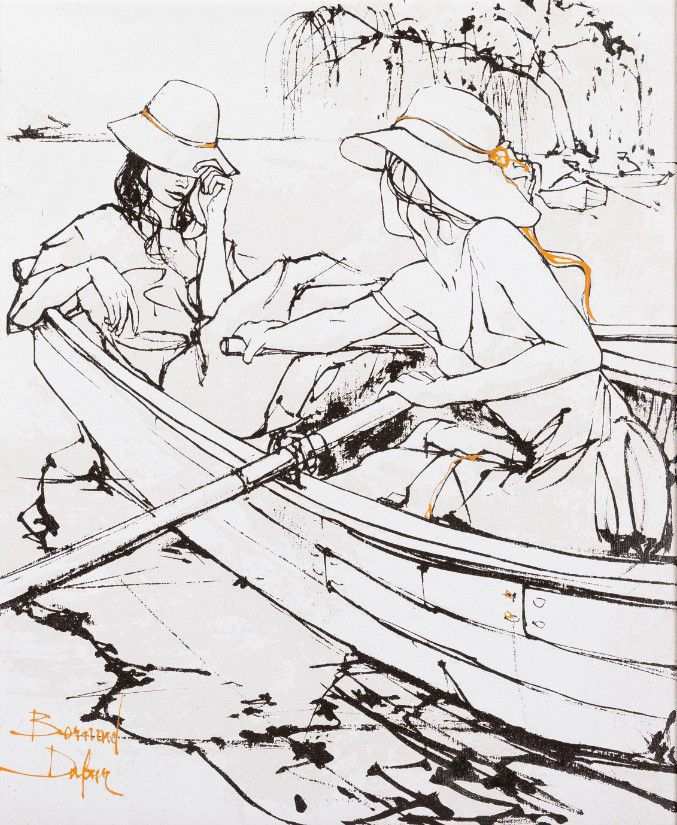Bernard Dufour "Girls On The Boat"
Bernard Dufour
Artwork Details
Artwork Description
Artist: Bernard Dufour
Title: Girls on the Boat
Medium: Oil on Canvas, Signed
Dimensions: 46 cm x 37 cm
Step into the evocative world of Bernard Dufour with "Girls on the Boat," a captivating oil on canvas masterpiece. The artist's signature adds a personal touch to this artwork, inviting you to explore its dimensions of 46 cm x 37 cm.
Dufour's artistic finesse shines through in his portrayal of the scene, capturing the essence of the moment with each brushstroke. The canvas becomes a window into a world where the beauty of the girls and the tranquil boat ride converge in a harmonious composition.
With "Girls on the Boat," Dufour's talent comes to life, creating a timeless piece that captures both the viewers' imagination and the essence of the scene he depicts. Allow yourself to be drawn into the enchanting narrative woven by the artist's skillful hand.
Bernard Dufour (21 November 1922 – 21 July 2016) was a French painter. He was notable for abstract painting after the Second World War, and later for portraits and human figures.Dufour originally studied agricultural engineering. During the German Occupation, he was pressed into war labour. He was sent to Germany with Alain Robbe-Grillet and there they met Claude Ollier. In the winter of 1944–45, he went to the University of Heidelberg and studied Eugène Delacroix and Stéphane Mallarmé. After the war he copied works of Michelangelo and Tintoretto in the Louvre.
His first solo exhibition was at the Galerie Maeght in 1948, followed by exhibitions in the Jeanne Bucher gallery between 1951 and 1953. Motivated by these successes, he soon signed an exclusive contract with art dealer Pierre Loeb. He collaborated with many writers, including René de Solier, André Pieyre de Mandiargues, Georges Lambrichs, Paule Thévenin and Alain Jouffroy. In the later 1950s, he began to attract attention outside France; in 1959, he participated in the second documenta exhibition in Kassel.
From 1960, he turned from abstract to figurative painting, initially self-portraits and mournful figures, later scandalous nudes. In 1961 he opened a studio in an old mill on the river Aveyron in Foissac, where he also lived. He took part in the Venice Biennale in 1964. From this time he formed enduring friendships with other writers of the literary avant garde, such as Pierre Guyotat, Denis Roche, Catherine Millet and Jacques Henric. From the 1970s he worked in photography as well as painting, and wrote several volumes of artistic notes and memoirs.
La Belle Noiseuse, Jacques Rivette's 1991 film about an elderly artist, was partly inspired by Dufour, who was credited as "the hand of the artist" painting the picture at the heart of the film. In 1995, Dufour's wife Martine died of cancer. Dufour lived his last years in Villeneuve.
Work
Dufour's representational art has often erotic components. The models in his paintings are often in the company of the painter. This visible relationship with the model brings the viewer of his pictures into a voyeur position. The blending of love and death has been a theme, as in a large (2.76 × 5.05 m) 1975 canvas depicting the autopsied body of Red Army Faction militant Holger Meins juxtaposed with Dufour's nude wife Martine defecating.













